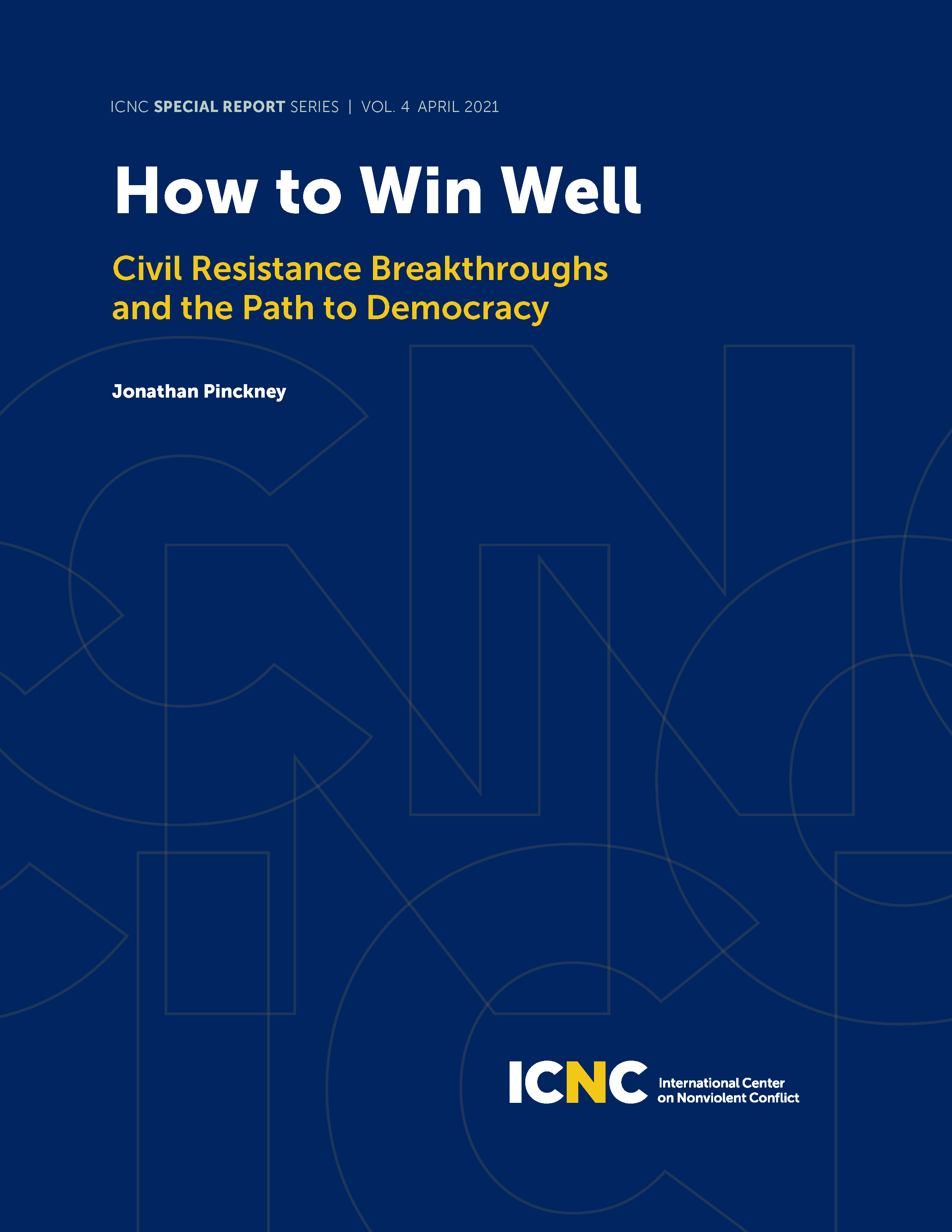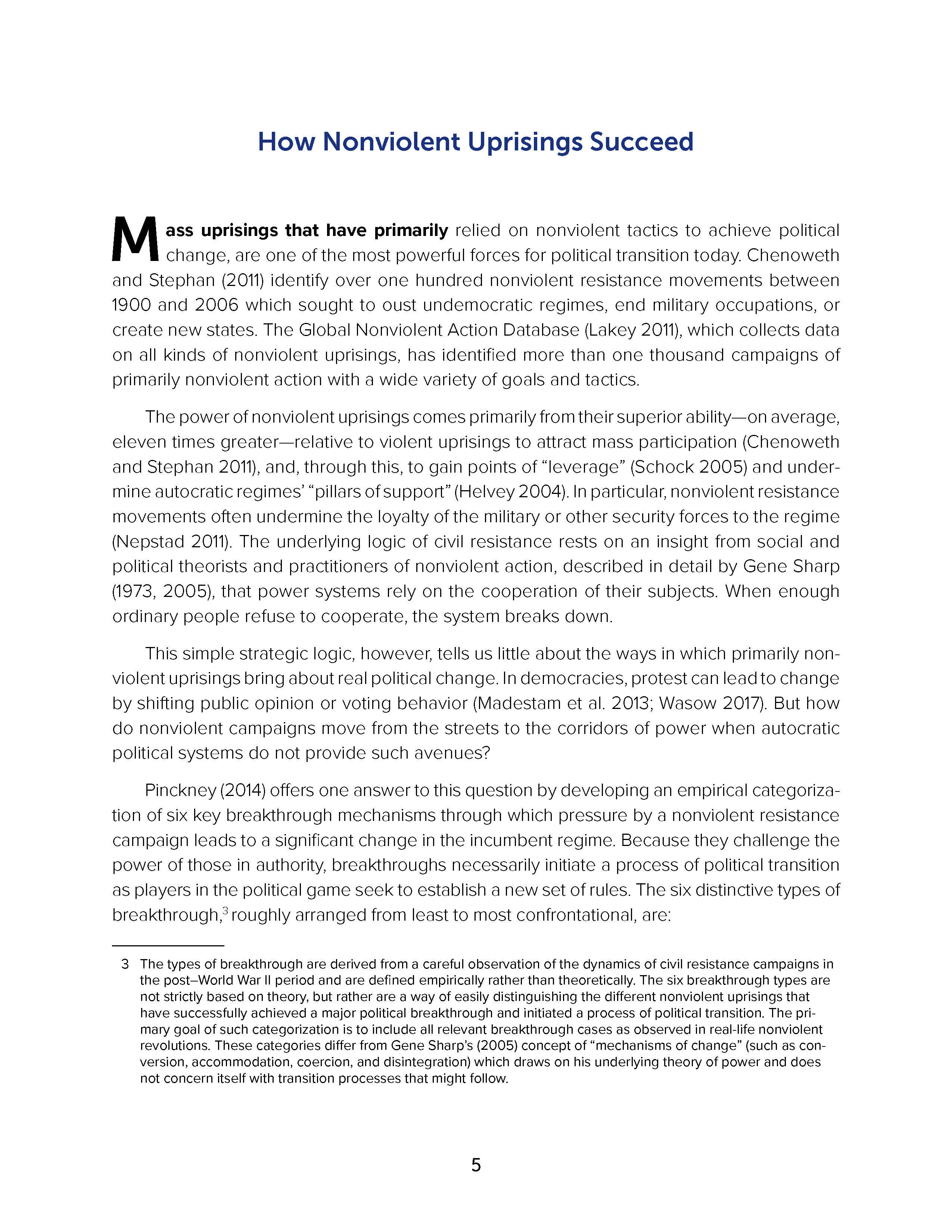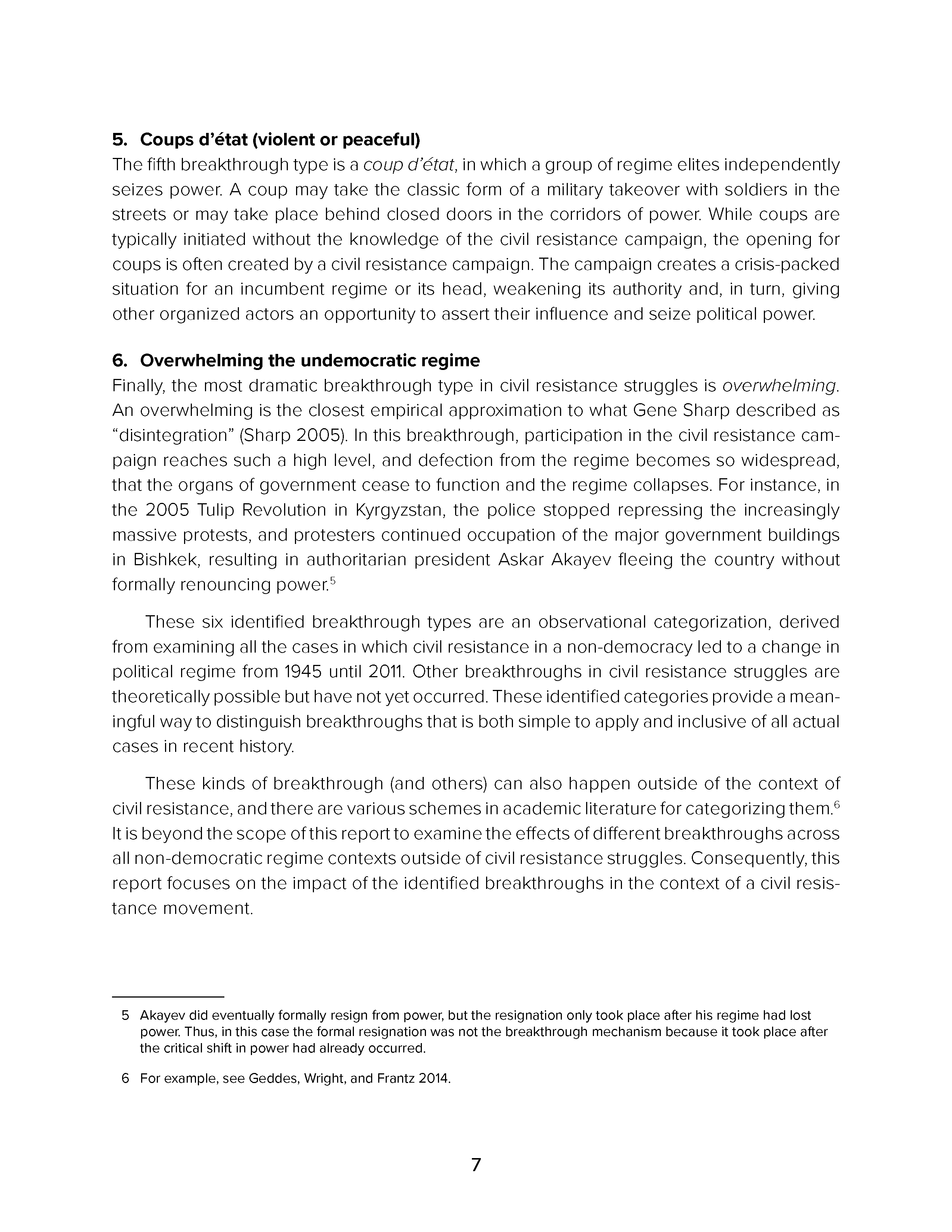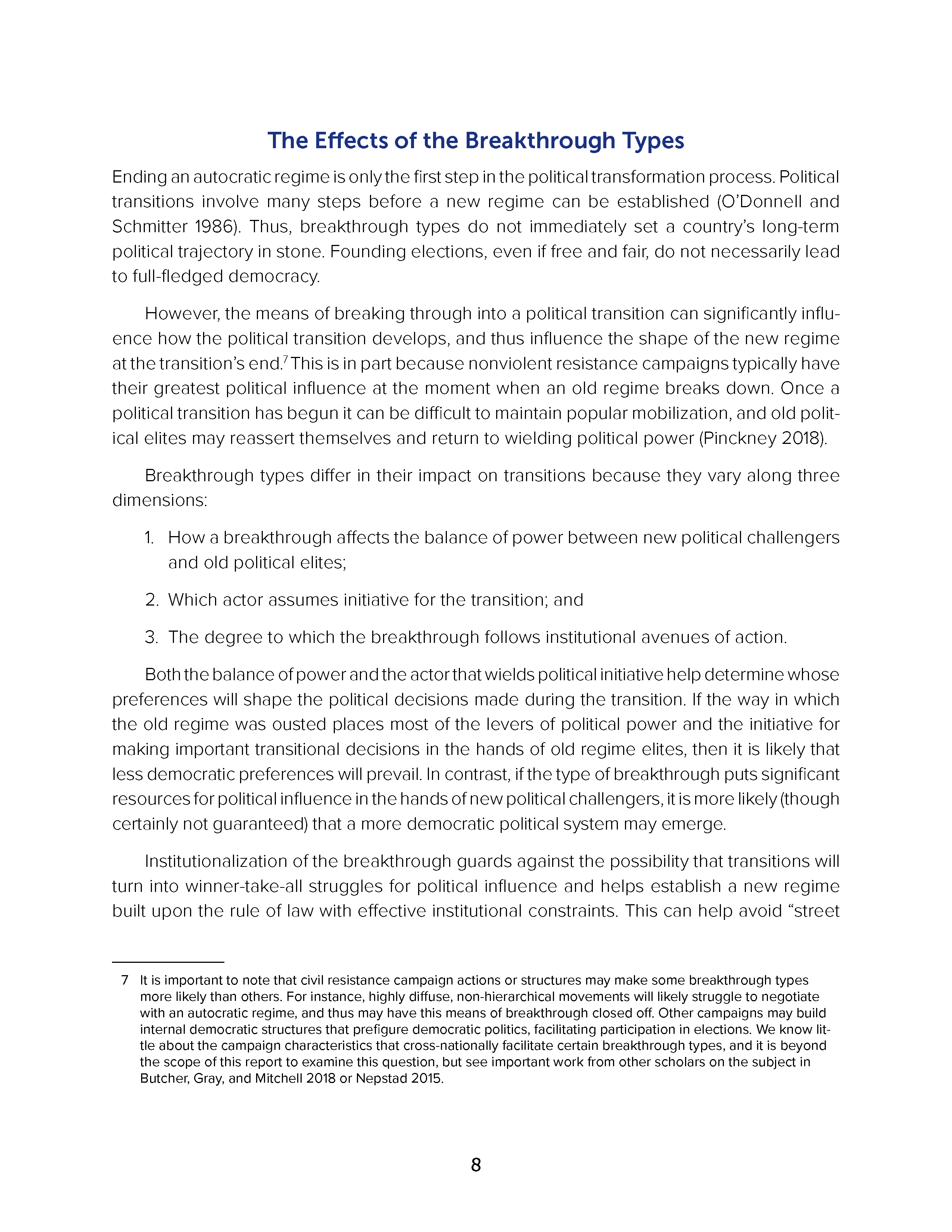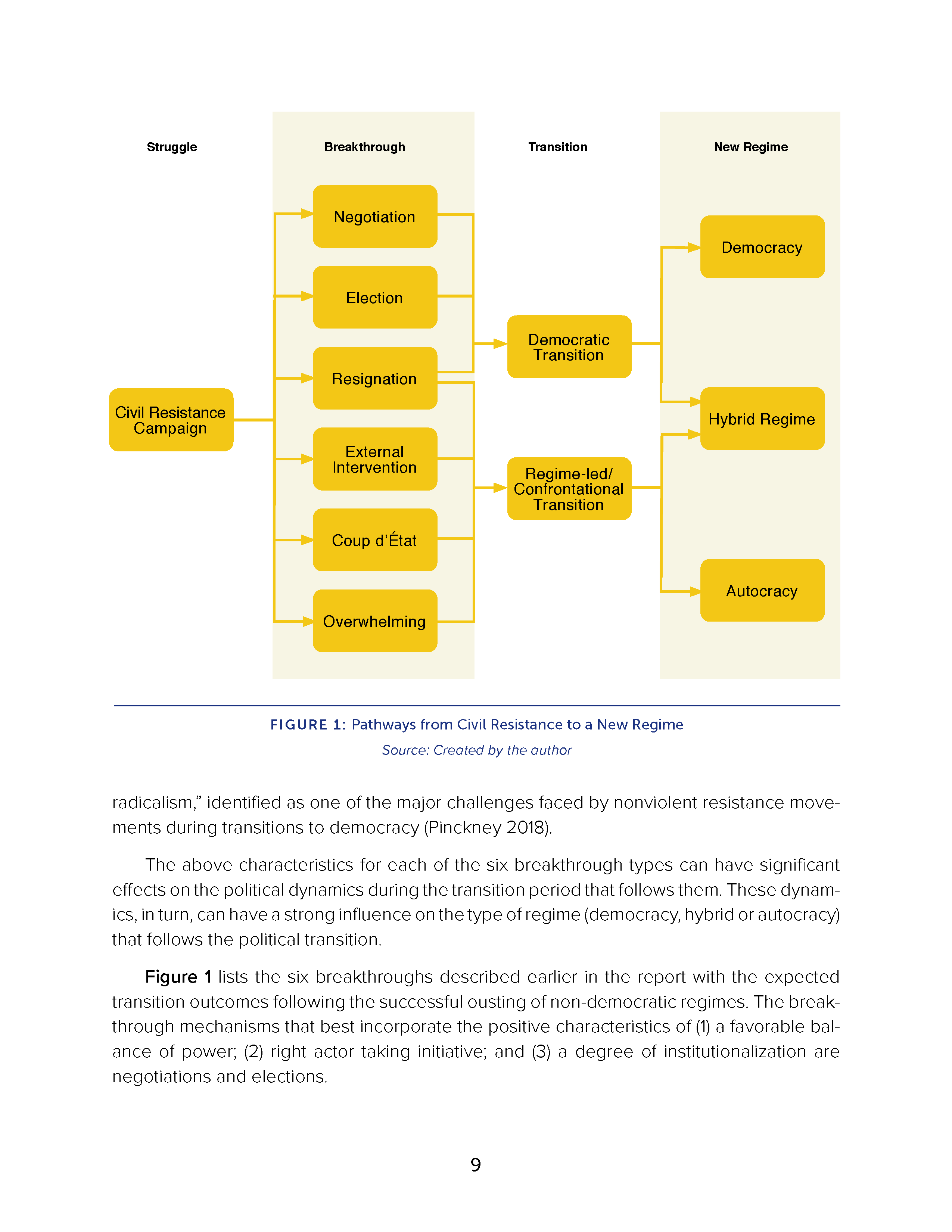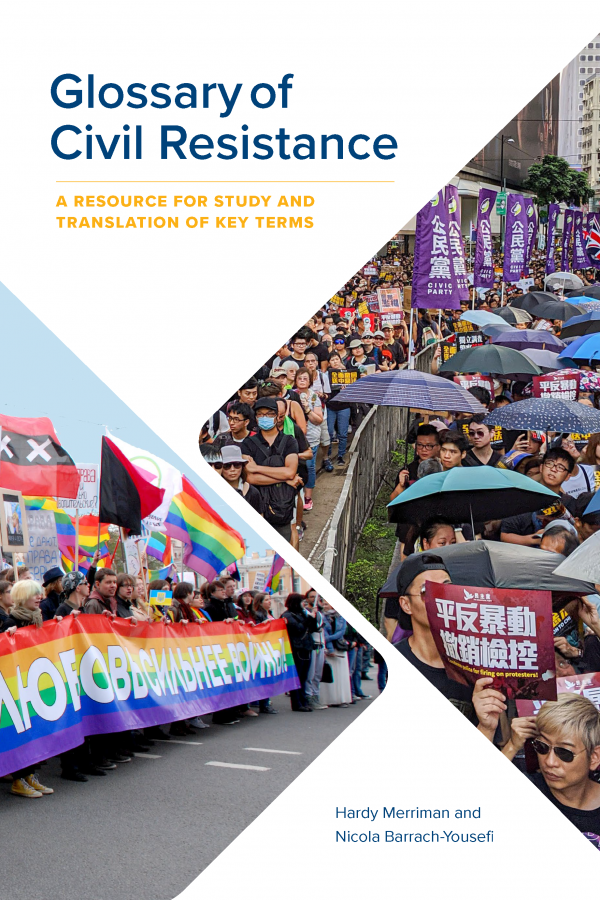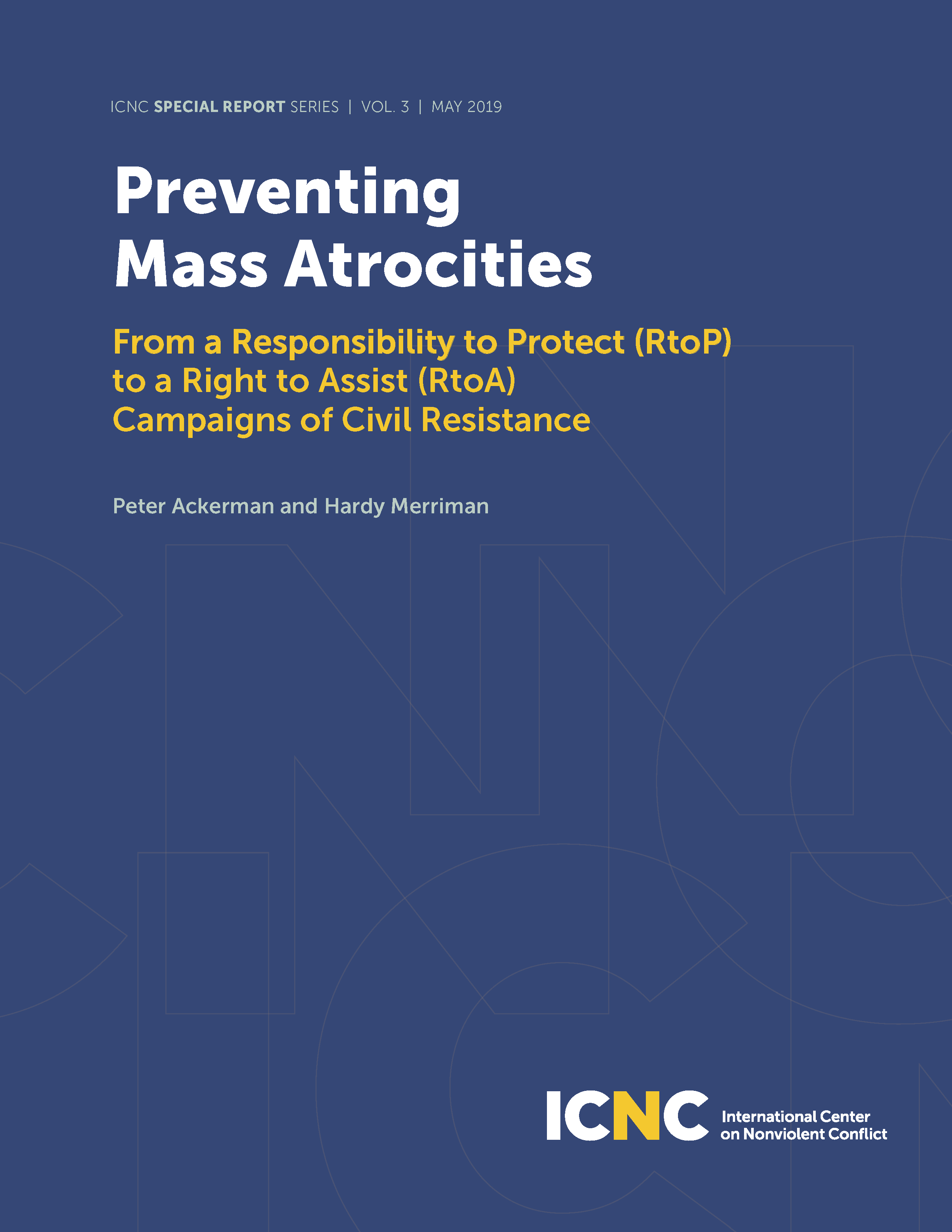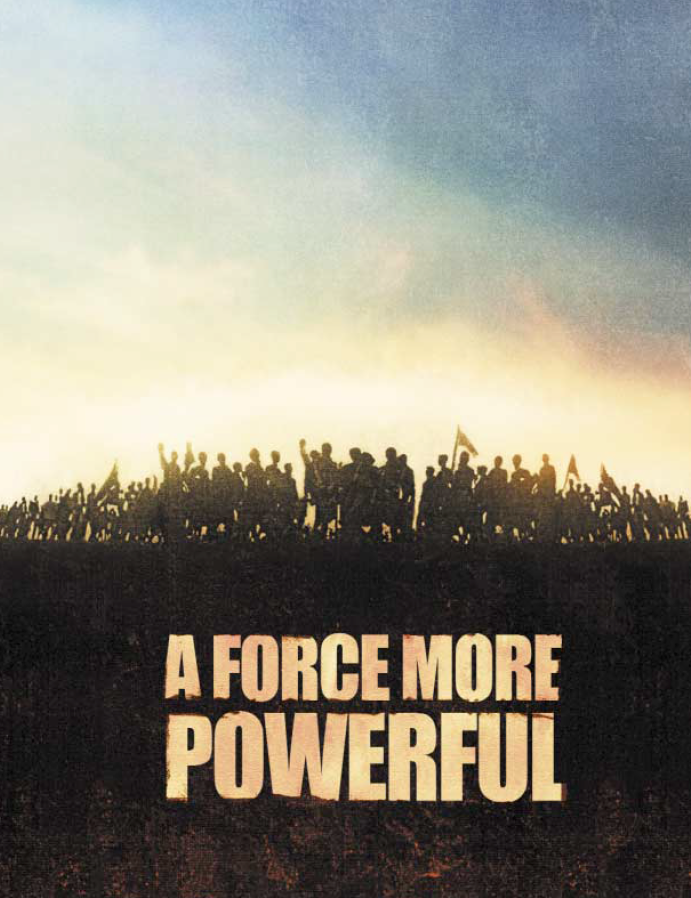How to Win Well: Civil Resistance Breakthroughs and the Path to Democracy
The report’s key argument is that the type of breakthrough critically shapes the political transition that follows it, pushing the transition in either a democratic or undemocratic direction. This occurs because the breakthrough types differ along three key dimensions:
1. the relative power balance between the incumbent regime and opposition actors;
2. the type of actor which takes initiative at the beginning of the transition (as well as the type of initiative the actor takes); and
3. the degree of institutionalization of the transition process.
The movements leading to democracy are those that begin with breakthroughs characterized by a power balance favorable to a nonviolent challenger, an opposition-driven initiative, and institutional channels. Negotiations and elections are the breakthroughs that best approximate these three characteristics and thus are expected to lead to more democratic outcomes.
ICNC Special Report
Published April 2021
